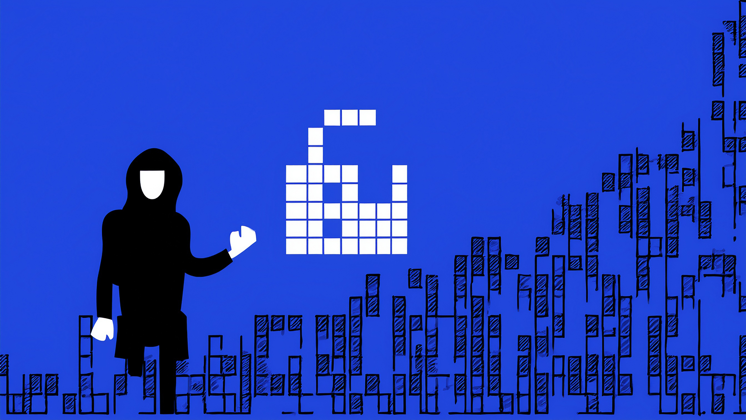As the April 15 tax deadline approaches, finance teams across the US face a surge in tax-related scams. For mid-to-large C-Corporations, this period brings heightened risk, from IRS impersonation to AI-powered deception.
The IRS consistently warns that fraudsters exploit this season’s urgency and complexity. And in 2025, these scams are more sophisticated than ever.
Below, we outline key threats, real-world incidents, and proactive measures finance leaders can take to safeguard their organizations.
IRS impersonation scams
What it looks like: You receive an urgent phone call, email, or mailed notice claiming to be from the IRS, demanding immediate tax payment, often under threat of legal action or asset seizure.The reality: The IRS never initiates contact via email, text, or phone to request payment. These impersonation scams aim to pressure finance or payroll staff into rushing payments.Real-world example: The IRS flags impersonation scams as part of its annual "Dirty Dozen" list, citing increased reports of fraudsters posing as IRS agents during tax season to collect fake debts or personal information from businesses and individuals.What to do:
Do not respond or click on any links.
Verify legitimacy directly via IRS.gov.
Educate teams on how the IRS contacts taxpayers.
W-2 payroll tax fraud
What it looks like: A scammer impersonates a senior executive and requests W-2 data from HR or payroll teams. The goal? File fraudulent tax returns using stolen identities.Why it works: The request appears to come from someone in authority. Without strong internal controls, it can bypass standard scrutiny.Real-world example: Cybercriminals are now using generative AI to power W-2 fraud schemes. These attacks often impersonate executives or trusted partners to trick HR or payroll into handing over sensitive employee data. The endgame is identity theft, followed by the filing of fake tax returns to claim fraudulent refunds.Prevention tips:
Use secure portals for file sharing — never email W-2s.
Verify executive requests for sensitive information.
Train payroll and HR teams on impersonation red flags.
Business email compromise (BEC) & vendor invoice fraud
What it looks like: An email, seemingly from your CFO or tax advisor, requests a wire transfer to cover a tax obligation. It may reference real vendors, include spoofed email domains, and appear convincingly legitimate.Why it works: These scams thrive on urgency, authority, and familiarity.Real-world example: The FBI's 2023 IC3 report found that BEC scams led to over $2.9 billion in adjusted losses, making them one of the costliest types of fraud affecting US businesses. While these scams happen year-round, cybercriminals often exploit tax season as a prime time to mimic financial authorities.What to watch for:
Sudden changes in payment details or urgency to bypass normal workflows.
Requests to process tax payments outside usual systems.
Messages from emails that look nearly, but not exactly, legitimate.
How to stay ahead:
Require multi-person approval for tax-related payments.
Train AP and treasury teams to verify any changes in vendor details.
Use fraud prevention platforms like Eftsure to validate account information in real time.
AI-powered tax scams
What it looks like: A finance team receives a voicemail or video call from what sounds and looks like their CFO, authorizing a wire transfer. Or an email crafted with eerily perfect grammar and context encourages urgent tax-related payments.Why it's dangerous: Fraudsters are now using generative AI to create deepfake audio, realistic fake IRS documents, and hyper-personalized phishing messages tailored to your team, your language, and your processes.Real-world example: In a headline-making case, a finance worker at a global manufacturing firm was tricked into transferring $25 million after receiving a deepfake video call impersonating his company's CFO and colleagues.What to do:
Introduce human-in-the-loop verification for all high-value transactions.
Train teams on deepfake detection and AI-enabled phishing.
Monitor unusual communication patterns and verify unexpected requests, especially during tax season.
Practical prevention tips for finance teams
To reduce the risk of falling victim to tax-season scams, ensure your team is equipped with the following safeguards:
✅ Verify all IRS communications directly via irs.gov.
✅ Use multi-person approval workflows for all tax-related payments.
✅ Train finance, HR, and AP teams on phishing, BEC, and deepfake red flags.
✅ Never send sensitive employee or financial data via email.
✅ Enable Multi-Factor Authentication (MFA) across financial systems.
✅ Partner with platforms like Eftsure to verify payment recipients in real time.
More tax season threats and how to stay ahead
Looking to strengthen your team's defenses beyond April 15? Our CFO's Guide to Cybersecurity breaks down evolving fraud tactics, including AI-powered scams, and how to build resilient, compliant finance processes.







